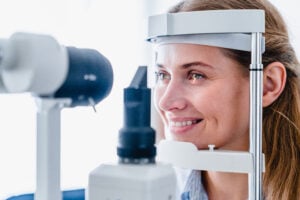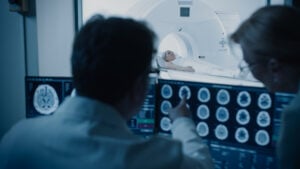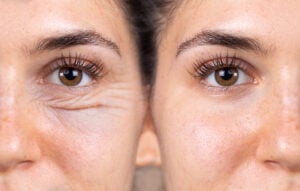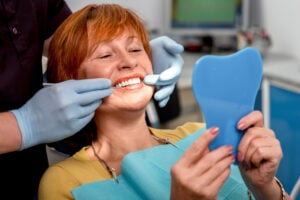Stem Cell therapy is no new concept but it has boomed in recent years. In America alone, there are more than 500 clinics, each one offering treatments for various conditions. These conditions range from minor sports injuries and osteoarthritis to severe cases of multiple sclerosis, autism, and even cancer.
Advances in stem cell research have scientists and doctors in a hype. The findings offer great hope and a promise for future treatments and medical achievements. New possibilities for medical cures are the order of the day and Stem Cell Therapy has even been dubbed as “the next chapter in organ transplantation”!
But what exactly is Stem Cell Therapy?
Let’s go back to the drawing board…
Stem cells are the so-called ‘raw materials’ of the body and under the right conditions, they will divide into more stem cells. They are the only cells in the body that can regenerate. These special cells can then be used to renew or replace damaged or diseased tissue. They can also be used in transplant or regenerative medicine.
Amazing, right?
What can Stem Cell Therapy be used for?
According to the Mayo Clinic, Stem Cell Therapies are being administered to help treat (and sometimes cure) the following medical conditions:
- Osteoarthritis
- Alzheimer’s disease
- Parkinson’s disease
- Type 1 Diabetes
- Spinal Cord Injuries
- Stroke
- Burns
- Cancer
- Amyotrophic Lateral Sclerosis
- Tissue grafts to bone, skin, eyes
- Cerebral Palsy
As you read this, more and more stem cell studies are being applied. This means that by tomorrow, the above list could lengthen. For example, bone marrow stems cells are currently being tested for heart and neurological disease treatment.
The Procedure
The first step in Stem Cell therapy is to source the cells. Currently, the cells are being taken from the following parts of the human anatomy:
- Embryonic stem cells – from embryos that are 3-5 days old
- Adult stem cells – from bone marrow or fat
- Altered adult cells – via genetic modification (used for research purposes only)
- Perinatal stem cells – found in amniotic fluid and umbilical cord blood
Stem cells can be removed from your own body for “re-use” or donor stem cells can be used. Allogenic (donor) stem-cells are prepared and stored in a laboratory and Autologous (your own) stem-cells are harvested on the same day as a procedure. Most often, the cells are gathered via a bone marrow aspiration from the hip bone or by sucking fat from your buttocks or tummy.
The stem cells are then concentrated and injected into the treatment area by using a scope to secure placement.
The procedure is fairly simple for joint injury treatments but other medical conditions can be more complicated.
What are the possible side-effects?
The side-effects generally depend on the type of cell therapy applied. For example, in Orthopaedic Stem Cell Therapy, where a knee treatment is being administered, the side-effects are quite minimal. One might experience some pain, swelling, and joint stiffness in the injection site.
If the transplant is more serious, like in the case of cancer, for instance, then the side-effects might be more extensive. According to the American Cancer Society side-effects can include:
- Nausea and vomiting (Mucositis in cancer patients)
- Rejection of allogenic transplant GVHD (graft-vs-host disease)
- Graft failure, bleeding, infections and tumour formation
- Interstitial pneumonitis
Where are medical tourists going for Stem Cell Therapy?
Many hospitals now offer Stem Cell therapy, but let’s take a look at some of the more renowned institutions around the world:
- Emory Orthopaedics and Spine Centre in Atlanta, Georgia, were one of the first centres to treat sports injuries using stem cell therapy.
- Most major research centres in the USA also perform stem cell therapy, Duke, Mayo, and Yale included.
- Professional athletes tend to use the same providers. In this case, the Kerlan Jobe Clinic, Intermountain Stem Cells, and Markou Medical Centre seem to be popular choices.
- Well known European Stem Cell Treatment Centres include MedXcell in Switzerland, Sports Surgery Clinic in Santry, Ireland, and Anova in Germany.
- In South Korea, the Chaum Anti-Aging Centre also carries an excellent reputation.
This is just a short list of therapy centres that are favoured by prominent athletes. They have excellent reputations for applying successful treatments.
What should one consider before deciding that Stem Cell Therapy should be the course of treatment?
Despite the fact that there are very few adverse effects reported, it is prudent to:
- Understand the science behind your condition (to protect yourself from being scammed)
- Research your doctor and the cases he has done
- Ask about the benefits and potential risks
- Ask if your doctors are part of an approved FDA or equivalent clinical trial
- Ask where the bone marrow will come from.
- Be wary of procedures that offer the same treatment for multiple conditions.
If you are attempting an “unproven” treatment, you might also want to consider the following risks:
- Complications and long-term effects
- You may be made ineligible for future trials
- Financial costs – treatment and often travel expenses
- The results might be short-term and may need to be repeated
- The general health standards and safety in the country where you are seeking medical treatment
N.B. Remember that an ‘experimental’ procedure is not necessarily a clinical trial – if you have to pay for the procedure, it is definitely not part of a clinical trial.
Final words
In this modern era, there’s no shortage of bold statements being made about the profuse variety of conditions that can be treated by stem cell therapy. This form of treatment has certainly changed the way doctors work and has seemingly made the impossible… possible.














